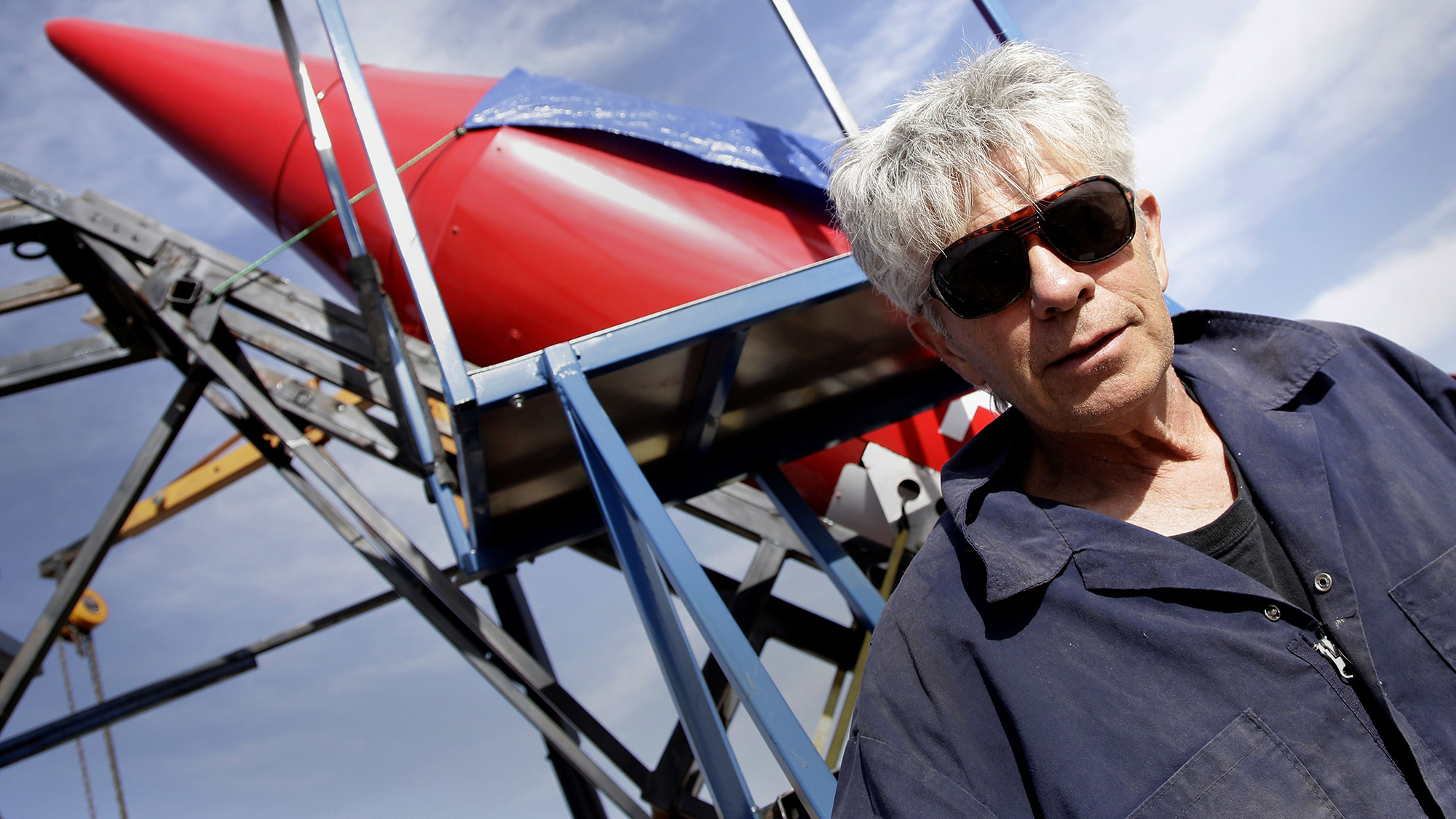Flat-Earther 'Mad' Mike Hughes Is Being Sponsored by a Dating App to Nearly Get Himself Killed
'Mad' Mike Hughes — a self-taught rocket scientist and avowed flat-Earth conspiracy theorist — is launching himself into the sky again.

"Mad" Mike Hughes, a self-taught rocketeer and flat-Earth conspiracy theorist, will once again attempt to launch himself into the sky over the Mojave Desert on a steam-powered rocket this Sunday (Aug. 11), hopefully reaching heights of 5,000 feet (1,500 meters) before parachuting safely back to the round, welcoming Earth. (What are you doing this weekend?)
The stunt, which is being sponsored by a "commitment-free dating app" and filmed as part of an upcoming Discovery Channel series featuring Hughes, gives the 63-year-old rocketeer a chance to outdo himself following a successful-yet-bumpy DIY launch he completed in March 2018.
Despite multiple setbacks and dust-ups with the Bureau of Land Management, Hughes rode his homemade rocket some 1,875 feet (572 m) into the air over Amboy, California, on March 24, 2018, before plummeting back to Earth at 350 mph (563 km/h). Hughes had to deploy two parachutes to save himself from smashing into the desert nose-first, finally walking away with just a sore back.
This Sunday's launch looks to be a bit riskier, with Hughes aiming to blast himself more than twice as high into the sky before dropping back to Earth at around 400 mph (643 km/h), according to a news release for the event. As with last year's launch, Hughes reportedly made his new steam-powered rocket at home in his garage — however, he will get some help this time in the form of a portable launchpad, instead of having to jury-rig a mobile home into a ramp (as he did last year).
Will Hughes be able to see the curvature of the Earth from his mile-high vantage point, thus crushing his stated belief that our planet is "shaped like a Frisbee?" Not unless his steam-powered contraption exceeds its reach by about seven-fold, carrying him 35,000 feet (10,700 m) up instead.
But proving or disproving the Earth's 100% verifiable roundness is not the goal of this stunt, anyway. As Hughes has said before, he will need to soar past the Kármán line — that contested boundary where the sky ends and space begins, roughly 62 miles (100 kilometers) over Earth — to personally see our apparently latke-shaped planet from space with his own eyes. To do that, Hughes told the Associated Press last year, he wants to build a "Rockoon," or rocket/gas-balloon-hybrid, which he can use to float high into the atmosphere before lighting the rocket's fuse and blasting up even farther. This Sunday's event puts him one small step closer to that ambition.
Truly, 2019 is an exciting time to love rocket science while believing that everything NASA says is a lie.
Sign up for the Live Science daily newsletter now
Get the world’s most fascinating discoveries delivered straight to your inbox.
- 7 Ways to Prove Earth Is Round (Without Going to Space)
- 101 Images of a Round Earth Taken from Space
- 8 Times Flat-Earthers Tried to Challenge Science (And Failed)
Originally published on Live Science.

Brandon is the space/physics editor at Live Science. His writing has appeared in The Washington Post, Reader's Digest, CBS.com, the Richard Dawkins Foundation website and other outlets. He holds a bachelor's degree in creative writing from the University of Arizona, with minors in journalism and media arts. He enjoys writing most about space, geoscience and the mysteries of the universe.









